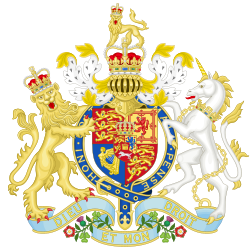History
| Highland Society of London Act 1816 | |
|---|---|
| Act of Parliament | |
 | |
| Long title | An Act for the Incorporation of The Highland Society of London; for the better Management of the Funds of the Society; and for rendering its Exertions more extensive and beneficial to the Public. |
| Citation | 56 Geo. 3. c. xx |
| Dates | |
| Royal assent | 21 May 1816 |
| Text of statute as originally enacted | |
| Highland Society of London Act 1831 | |
|---|---|
| Act of Parliament | |
 | |
| Long title | An Act for repealing, altering, enlarging, and amending certain Provisions of an Act passed in the Fifty-sixth Year of the Reign of His late Majesty King George the Third, intituled "An Act for the Incorporation of the Highland Society of London, for the better Management of the Funds of the Society, and for rendering its Exertions more extensive and beneficial to the Public." |
| Citation | 1 & 2 Will. 4. c. xlvii |
| Dates | |
| Royal assent | 23 August 1831 |
| Text of statute as originally enacted | |
The society was founded in 1778 by Highland gentlemen resident in London and was incorporated by an act of Parliament, the Highland Society of London Act 1816 (56 Geo. 3. c. xx) on 21 May 1816.
Within a year of its foundation, its members had come to include a number of notable Scots: [2]
- Lord Macleod
- Sir Harry Monro
- Hon Archibald Fraser of Lovat
- Archibald Macdonald
- Hon. General Fraser (President)
- Lord Adam Gordon
- The Earl of Eglinton
- John Macpherson
- The Duke of Gordon
- The Duke of Atholl
- John Campbell of Calder
- The Earl of Seaforth
- Lord Frederick Campbell
- The Earl of Caithness
- Major-General Munro
- William Wemyss
The Presidents over the first 25 years of the Society's existence were: [2]
- 1778 Simon Fraser of Lovat
- 1779 Archibald Montgomerie, 11th Earl of Eglinton
- 1780 James Graham, 3rd Duke of Montrose
- 1781 Alexander Gordon, 4th Duke of Gordon
- 1782 Lord Adam Gordon
- 1783 John Murray, 4th Duke of Atholl
- 1784 Lord Adam Gordon
- 1785 John Murray, 4th Earl of Dunmore
- 1786 John Campbell, 1st Marquess of Breadalbane
- 1787 Douglas Hamilton, 8th Duke of Hamilton
- 1788 Francis Mackenzie, 1st Baron Seaforth
- 1789 Francis Stuart, 9th Earl of Moray
- 1790 James Duff, 2nd Earl Fife
- 1791 Alexander Macdonald, 1st Baron Macdonald
- 1792 George Campbell, 6th Duke of Argyll
- 1793 George Gordon, 5th Duke of Gordon
- 1794 Robert Hay-Drummond, 10th Earl of Kinnoull
- 1795 John Murray, 4th Duke of Atholl
- 1796 Sir John Sinclair, 1st Baronet
- 1797 George Gordon, 9th Marquess of Huntly
- 1798 Eric Mackay, 7th Lord Reay
- 1799 Henry Dundas, 1st Viscount Melville
- 1800 Hector Munro, 8th laird of Novar
- 1801 James Forbes, 17th Lord Forbes
- 1802 Alexander Macdonald, 2nd Baron Macdonald
- 1803 George Gordon, 5th Duke of Gordon
- 1804 Alexander Hamilton, 10th Duke of Hamilton
- 1805 Archibald Hamilton, 9th Duke of Hamilton
- 1806 Prince Augustus Frederick, Duke of Sussex
- 1807 Prince Augustus Frederick, Duke of Sussex
- 1808 Prince Augustus Frederick, Duke of Sussex
- 1809 George Gordon, 5th Duke of Gordon
- 1810 George Gordon, 5th Duke of Gordon
- 1811 George Gordon, 5th Duke of Gordon
- 1812 George Gordon, 5th Duke of Gordon
- 1813 Prince Augustus Frederick, Duke of Sussex